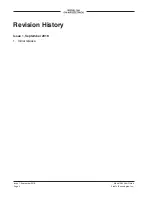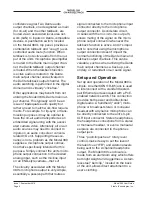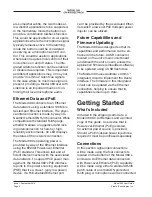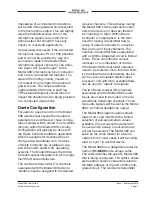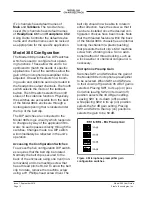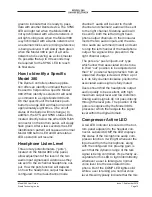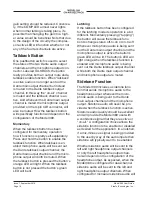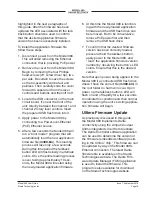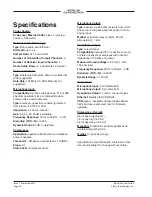
Issue 1, September 2016
Model 380 User Guide
Page 18
Studio Technologies, Inc.
PoE-enabled Ethernet switch connecting a
personal computer to the Model 380. Then
by using the appropriate ARP command
the required “clues” can be obtained.
Optimizing Network
Performance
For best Dante audio-over-Ethernet per-
formance a network that supports VoIP
QoS capability is recommended. This can
typically be implemented on virtually all
contemporary managed Ethernet switches.
There are even specialized switches that
are optimized for entertainment-associated
applications. Refer to the Audinate website
(www.audinate.com) for details on optimiz-
ing networks for Dante applications.
Application Firmware Version
Display
As part of the Model 380’s power-up
sequence the unit’s application firmware
(embedded software) version number can
be displayed. This is useful when working
with factory personnel on application sup-
port and troubleshooting. Before connecting
the PoE-enabled Ethernet cable, press and
hold the talkback button. Then connect the
Ethernet cable. Upon application of PoE
power the Model 380 will not go through
its normal power-up sequence but instead
will display the firmware version. The LED
associated with the talkback button will
“flash” green in color to display the major
version number and then “flash” orange to
display the minor version number. Then the
LED will remain off until the talkback but-
ton is released. Once the button has been
released normal operation will then take
place. As an example of what would be a
typical firmware display, if the talkback but-
ton’s LED “flashes” green once followed by
the LED “flashing” orange thrice it would
indicate that application firmware version
1.3 is present in the Model 380.
Application Firmware Update
Procedure
It’s possible that updated versions of the
application firmware (embedded software)
that is utilized by the Model 380’s proces-
sor (microcontroller or MCU) integrated
circuit will be released to add features or
correct issues. Refer to the Studio Tech-
nologies website for the latest application
firmware file. The unit has the ability to load
a revised file into the MCU’s non-volatile
memory by way of a USB interface. The
Model 380 implements a USB host function
that directly supports connection of a USB
flash drive. The Model 380’s MCU updates
its firmware using a file named
m380.bin
.
The update process begins by preparing
a USB flash drive. The flash drive doesn’t
have to be empty (blank) but must be in
the personal-computer-standard FAT32 for-
mat. Save the new firmware file in the root
directory with a name of
m380.bin
. Studio
Technologies will supply the application
firmware file inside a .zip archive file. While
the firmware file inside of the zip file will ad-
here to the naming convention required by
the Model 380, the name of the zip file itself
will include the file’s version number. For
example, a file named
m380v1r3MCU.zip
would indicate that version 1.3 of the ap-
plication firmware (
m380.bin
) is contained
within this zip file.
Once the USB flash drive is inserted into
the USB interface, located on the main
circuit board under the cover, the unit
must be powered off and again powered
on. At this point the file will automatically
load. The precise steps required will be

